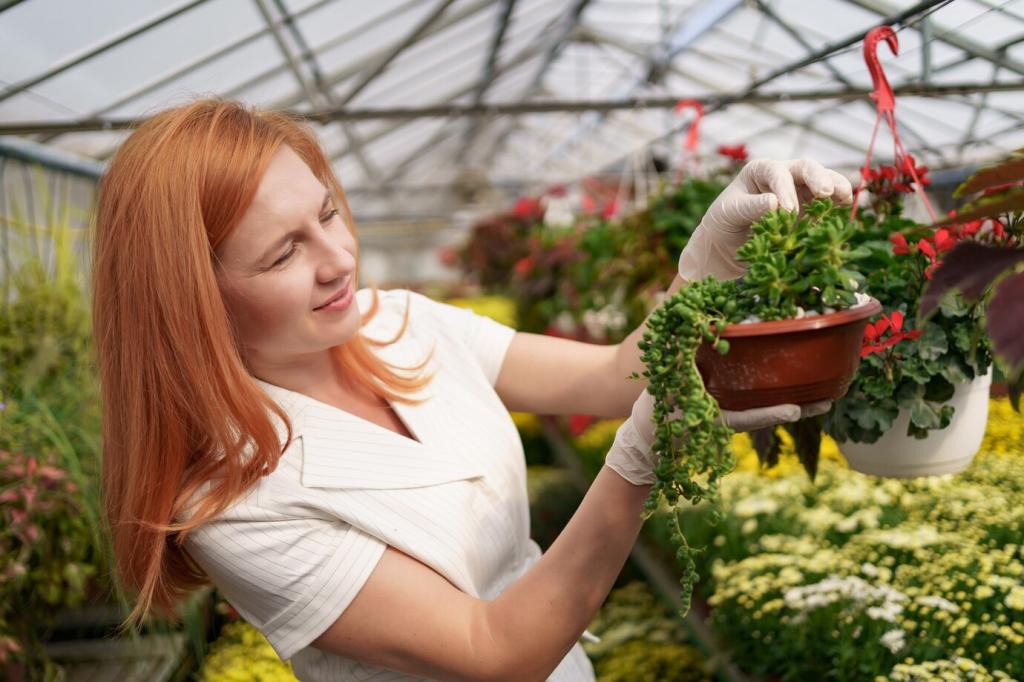
Aeroponics: The Future of City Farming
Aeroponics is revolutionizing the way cities approach food production, offering a cutting-edge solution to the challenges of urban farming. Unlike traditional agriculture, aeroponics uses air and mist to deliver nutrients directly to plant roots, eliminating the need for soil and drastically reducing water consumption. This innovative method is quickly becoming the cornerstone of sustainable urban agriculture, enabling cities to produce more food within a smaller footprint and making fresh, healthy produce available year-round. As the global population continues to urbanize, aeroponics stands at the forefront of a new era in city farming—offering unprecedented efficiency, sustainability, and potential for growth.
Transforming Urban Agriculture
Maximizing Space in Urban Environments
Cities worldwide face the challenge of limited space, making traditional agriculture difficult to implement on a large scale. Aeroponics addresses this by enabling high-density vertical farming. Plants are suspended in air, allowing for stacked layers within compact footprints—such as rooftops, warehouses, and underutilized buildings. This innovative use of space not only increases crop yields per square meter but also integrates seamlessly with existing urban infrastructure. By leveraging height rather than horizontal sprawl, aeroponics brings fresh food production directly into the heart of the city, making locally grown produce accessible even in the most crowded urban centers.
Enhancing Sustainability and Resource Efficiency
A hallmark of aeroponics is its remarkable efficiency in resource use. Traditional farming can consume vast quantities of water and fertilizers, often leading to runoff and environmental degradation. In contrast, aeroponic systems recycle water and nutrients within a closed-loop setup, ensuring plants receive optimal nourishment with minimal waste. This method conserves up to 95% more water than soil-based agriculture, a critical advantage in regions facing water scarcity. Additionally, the controlled environment reduces or eliminates the need for chemical pesticides, promoting not only environmental health but also improving food safety and quality for urban consumers.
Encouraging Year-Round and Localized Food Production
The reliance on outdoor conditions in traditional farming limits crop cycles and variety, especially in regions with harsh climates. Aeroponics allows for cultivation independent of season or weather, providing metropolitan areas with a continuous supply of fresh food. By bringing production closer to urban residences, aeroponics reduces transportation times, lowers the carbon footprint associated with food distribution, and guarantees fresher, more nutritious produce. The technology opens doors for city dwellers to access locally-grown greens, herbs, and specialty crops throughout the year, making urban food systems more resilient and self-reliant.
Innovative Technology Behind Aeroponics
The Science of Root Mist Nutrient Delivery
Unlike hydroponic systems, where roots are submerged in water, aeroponics suspends plant roots in air, periodically misting them with a carefully balanced nutrient solution. This direct mist delivery offers unparalleled access to oxygen, promoting vigorous root development and robust plant growth. Research has shown that plants grown aeroponically can have faster growth cycles, larger yields, and a higher concentration of beneficial nutrients compared to those grown in soil or water. The system’s adaptability means it can be tailored to suit the specific needs of a wide variety of crops, from leafy greens and herbs to fruits and even root vegetables, making it an ideal fit for diverse urban diets.
Environmental Monitoring and System Automation
State-of-the-art aeroponic systems deploy an array of digital sensors and automated controls to maintain optimal growing conditions around the clock. Real-time data analytics enable operators to adjust variables such as light, humidity, and nutrient delivery with precision, ensuring each plant receives exactly what it needs at every stage of growth. Automation also reduces labor costs and minimizes human error, making the systems more efficient and reliable. As technologies evolve, remote monitoring and artificial intelligence are being integrated, allowing for predictive adjustments and further enhancing crop productivity while maintaining a minimal environmental footprint.
Energy Considerations and Renewable Integration
Aeroponic farms, especially those in urban indoor environments, require energy to power lights, pumps, and climate control systems. To maximize sustainability, many operations are integrating renewable energy sources such as solar panels and wind turbines. The combination of energy-efficient LED lighting and smart scheduling reduces overall energy consumption, while advances in battery storage ensure consistent operation even during peak demand. As renewable technology continues to improve and smart grid connectivity expands, aeroponics will become even more environmentally friendly—contributing to the creation of green, self-sustaining cities of the future.
Social and Economic Benefits for Cities
Aeroponics-based urban farming opens new avenues for economic growth in cities, particularly in areas struggling with unemployment or underutilized real estate. Urban farms employ a broad spectrum of workers, from agricultural scientists and engineers to operations staff and marketing professionals. These farms often become anchors for community revitalization, attracting related businesses such as local food markets, cafés, and educational centers. By transforming vacant buildings into productive green spaces, cities are able to rejuvenate neighborhoods, foster entrepreneurship, and stimulate economic activity in sectors well-suited for sustainable growth.

